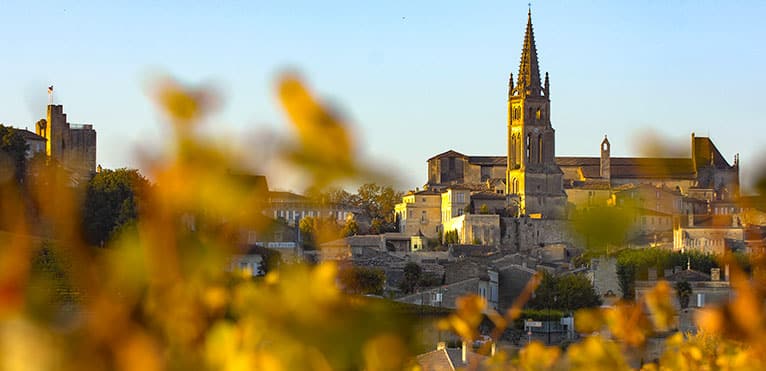
Contents
Pomerol is a wine appellation located in the Libourne region and belonging to the Bordeaux vineyards. This world-renowned appellation holds the French Appellation d’Origine Contrôlée (AOC) label and produces exclusively red wines. There are 140 vineyards in the Pomerol appellation.
The thousand-year-old vineyards of Pomerol
The Bordeaux region is a historic vineyard that has been cultivated for over 2,000 years. Its history, however, is marked by various stages that have enabled us to classify and recognize different geographical areas. For Pomerol in particular, the history of winegrowing dates back to the 12th century. However, the appellation as such was not truly recognized until 1936, when a decree included this geographical area among the Appellations d’Origine Contrôlée. In fact, the classification of the great Bordeaux wines requested by Napoleon III in 1855 for the Paris Universal Exhibition made no mention of Pomerol wines.
Moreover, as Pomerol has always refused to establish an official classification of its wines, the appellation does not have a Grands Crus classification. Nevertheless, despite this lack of classification, Pomerol boasts world-renowned estates such as Château Pétrus.
The small vineyards of Pomerol benefit from a temperate oceanic climate.
The Pomerol vineyards are located on the right bank of Bordeaux, in the towns of Pomerol and Libourne, and partly in the commune of Lalande-de-Pomerol. It is located to the east of Saint-Emilion on plateaus that descend in successive terraces towards the Isle valley. This vineyard covers an area of 785 hectares, which represents only 0.7% of Bordeaux’s vineyards and is therefore relatively small.
Throughout the appellation, the soil on the plateau is gravelly, meaning that it is strewn with gravel and pebbles of various sizes, as well as sand and clay. This type of soil is highly permeable, enabling the vines to root up to 5 meters deep. In this way, the vine can easily feed on the minerals found deep down, even during dry periods. Finally, this vineyard enjoys a temperate oceanic climate, with an average annual temperature of around 13 degrees Celsius.
Pomerol produces exclusively red wines
The Pomerol vineyards produce exclusively red wines, most of which are made with Merlot, which alone accounts for 80% of the grape varieties used in the production of the vineyard’s wines. However, almost all Bordeaux grape varieties, i.e. Cabernet-Sauvignon, Cabernet Franc, Malbec and Petit Verdot, are used by the vineyard to produce its wines.
Most Pomerol wines are dark ruby in color. Their first nose is rather complex, with aromas of both red fruit and flowers, notably violet and iris. These notes and aromas are more associated with the wine’s youth, as its bouquet tends to become more complex with age. Over time, Pomerol develops leather and truffle aromas. As for the palate, it offers both a supple, fleshy, sensual texture and powerful tannins that are typical of young wines. As a result, its mouthfeel is comparable to the finesse of Burgundy wines and the richness of Bordeaux, especially as ageing gives them greater finesse and complexity.
Because of their structure, Pomerols are wines for laying down, which means they can take up to 30 years to reach their full potential.
Pomerol goes wonderfully well with red meats and game.
The remarkable tannins of these wines make them powerful in character. Pomerols are also very complex wines. In fact, they are the perfect accompaniment to dishes such as duck with prunes or grilled prime rib. More generally, these wines go perfectly with grilled red meats and game, whether furred or feathered.
And to get the best out of them, we recommend drinking these wines at a temperature of between 16 and 18 degrees.
2000, a millennium vintage in Pomerol
Whether a wine is exceptional or not is determined by its vintage. For the Pomerol appellation, the vintages of the millennium were 1982 and 2005. Centenary vintages were held in 1990 and 2009. Last but not least, the appellation stood out with its exceptional crus in 1989 and 2000.
Family estates in Pomerol produce quality wines
Château La Conseillante
This great Pomerol wine dates back to the mid-17th century, when it was produced by Madame Catherine de Conseillan. A century later, it was bought by the Nicolas family, who own it today. Wines from this estate are distinguished from other Bordeaux wines by the aesthetic characteristics of their bottles: the capsule is purple and the label has a silver rim, but also by their flavor and aromas.
At Château La Conseillante, the vineyard covers 12 hectares with an average age of 35 years. The vines are harvested by hand, and the heirs of the Nicolas family strive to keep the château a human-scale estate with family values, in order to preserve the reputation of their vineyard.
Château Nénin
Château Nénin, which initially belonged to a number of families, came into the Despujols family in the 19th century and was acquired by the cousin family in the 20th century. The Delon family, who became owners of this Pomerol estate in 1997, rethought the wine-making process to make it what it is today.
According to the Delon family, Château Nénin is “the expression of a great Pomerol for laying down”. The estate’s vineyards cover 32 hectares, making it one of the largest in the Pomerol appellation, whose average vineyard size is 10 hectares.